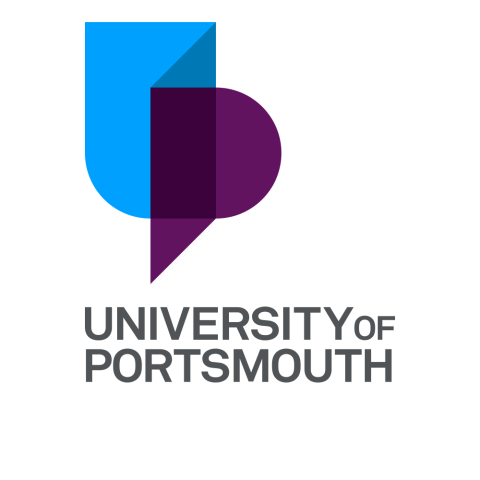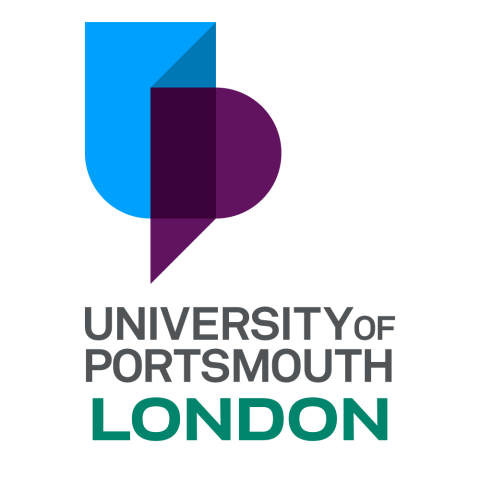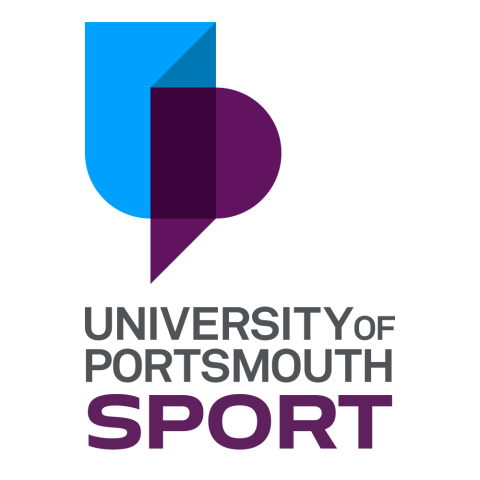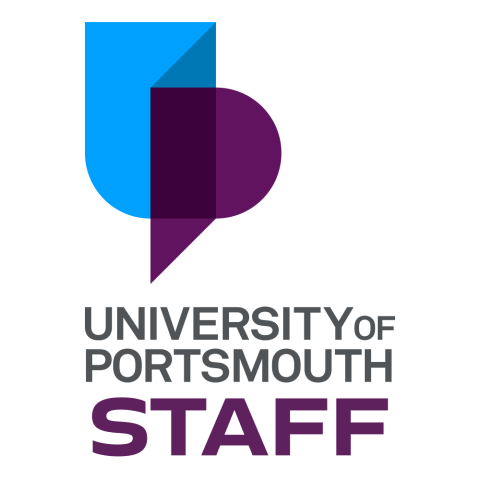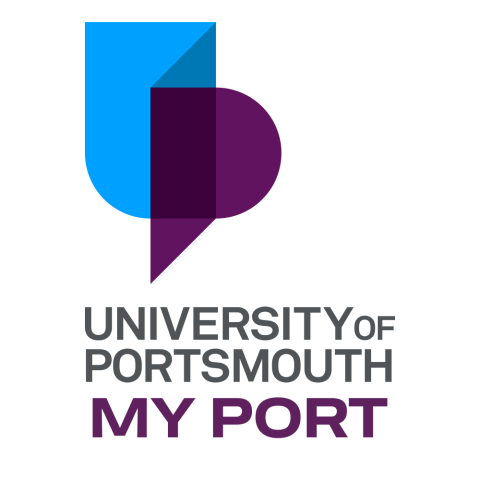
LinkedIn is a popular networking site with around 50 million students and recent graduates worldwide. Creating a LinkedIn profile as early as possible will put you in a strong position to begin connecting with over 65 million employers and searching for graduate jobs.
What is LinkedIn?
LinkedIn is a social networking site with a particular focus on careers and industry. Users of LinkedIn can upload details of their work and education history, network with other users, and join relevant groups to build connections.
LinkedIn is a useful resource to use at any stage of your career journey, and the earlier you begin developing your profile and making connections, the stronger your network and more in depth your profile will be.
LinkedIn lets you...
- Build a network of professional contacts
- Source career profiles for your chosen sector
- Connect with people you may have networked with before
- Look for job opportunities
- Research and follow organisations to stay up to date with their news
- Research and follow companies and individuals that might provide graduate opportunities
- Join groups which interest you (this could be users who share a particular attribute with you such as gender, or connecting with others in a particular sector)
- Present your achievements, work and CV
Differences between a CV and a LinkedIn profile
Your CV and your LinkedIn profiles have a lot in common. They work in different ways but should always compliment each other.
Your CV should be concise and only include details that are relevant to the position you are applying for. However, on LinkedIn you can add more details from a range of experiences to give further insight into your skills.
Your CV should:
- Be a static document
- Be concise and limited to no more than two pages
- Not have a photo
- Be a text-only document
- Be adaptable for different jobs and sectors
- Target a specific recruiter
Your LinkedIn profile should:
- Be a dynamic document
- Have a professional photo
- Include media files that support your portfolio such as PowerPoint presentations, documents, photos, PDFs and links
- Allow you to be targeted by recruiters, connect with alumni and professionals to get insider information
- Let you tap into work experience and job opportunities
Remember, you can control who sees your CV but anyone can view your LinkedIn profile. Make sure it's up-to-date and the content is consistent with your CV.
You should only have one LinkedIn profile, and connections can't be transferred if you open more than one account.
Building your LinkedIn profile
LinkedIn has written a guide to building a profile specifically for students.
Follow their steps and use our tips below to build your LinkedIn profile.
LinkedIn is simple to set-up, although it's not as easy as creating an X (Twitter) or Instagram account. You need more initially than simply a username and profile picture. You’ll need to add work and education information, an effective personal summary and an idea about how you want your profile to look.
To start with, just basic details are needed. Use your real name so you can be easily found in a search. Unlike other forms of social media, it's good to have a visible, professional email address on your page. You can use your personal email and you can always use your university Gmail address (@myport.ac.uk), which you'll still have access to two years following graduation.
Once you've set-up your profile you'll be asked what you’re most interested in. If you're not sure or would like to keep your options open choose 'not sure yet'. You can select things like 'building my network' or 'staying up-to-date with my industry'.
Your headline is the opening statement directly below your name on your profile.
If you're already employed your headline can be your job title, employer and main responsibility. If you're searching for work, then this is your chance to state your goal.
Employers and recruiters search LinkedIn using keywords, so be specific and keep it concise.
Profile picture
Make sure you choose a profile photo that is appropriate for your purpose. Remember, you want to make a good impression. Choose something with a plain background and good lighting.
A good quality profile photo will likely result in more views of your profile so if you get the chance get a high-definition, professional photo taken. This will help you stand out.
Cover story
You also have the option to add a cover story to your profile - a video up to 20 seconds long. When you have uploaded your cover story, your profile photo will have an orange circle outlining it. In searches, your photo appears normally but the cover story plays silently in the background until clicked on.
If you wish to add a cover story to your profile, it is important to determine what your goal is before recording. Do you wish to use this opportunity to seek new work opportunities, or do you wish to highlight particular skills and experiences? This can act as a recruiter’s first impression of you, and set the tone for your profile.
When recording your cover story, ensure that your video is well lit, and you’re dressed professionally with a neutral background. Try to avoid filming in noisy environments, and practise your video a few times to get comfortable with your script and avoid sounding unnatural or stilted. Be sure to speak clearly, make eye contact with the camera, and use positive body language such as sitting or standing up straight.
This is your initial pitch to a potential employer and your opportunity to generate interest.
Use this section to introduce yourself and tailor your profile in terms of what you particularly wish to highlight to employers. This might be academic knowledge, industry experience, or particular skills which you think will be of interest.
Give examples of relevant qualifications and experience, talk about your interests and objectives, and speak in the first person. You could cover content such as your ambitions and career aspirations, and highlight what you consider to be your best achievements.
This section should demonstrate your passion for your chosen sector or interest, as this enthusiasm can help you stand out from other profiles.
It can be helpful to break your summary up into sections with headings or bullet points to avoid any large paragraphs of text.
You can also use this section to advise employers that you are open to being contacted about vacancies and opportunities by adding a sentence like 'Any recruiter searching for an experienced xxx, please do not hesitate to get in touch'.
You will likely have gained a variety of experience through many different areas, such as part-time work, placements, volunteering or involvement in a club or society. You should include all of these within your experience section to give employers a full impression of your background, skills, and knowledge.
Don’t feel that you must only include experience that is directly related to your sector of interest, as all of the areas listed above will have given you valuable skills which you could use in future employment.
Rather than simply listing what it was that you did, it is important to consider the skills and knowledge that you gained from these experiences. For example, working in a cafe could be used to evidence your communication skills with co-workers and customers, teamwork skills, and organisation from serving customers efficiently.
All of your experiences will have relied on you to use or develop some sort of skill, so it is important to reflect on this while writing this section. As you’re not tied to a page limit in the same manner that you are with a CV, you can include the full range of your experience. Be sure to really go into detail about the different skills you developed in each to help the employer understand exactly what you could bring to a role.
LinkedIn lets you add detailed information, including achievements and highlights. Use bullet points to present your information and make the content more readable on a screen. You can also include media files, such as PowerPoint presentations, portfolio documents, photos, PDFs and links.
This section highlights skills you've developed. There's the opportunity for your connections to endorse you for your skills, which will increase your visibility to others. To encourage people to endorse your skills, leave your own endorsements on the skills on their profiles.
Examples of skills include teamwork, public speaking, communication, customer service, research and time management. Think about the skills you need for your chosen career. Use the job profiles from Prospects or job role person specifications to do some research.
Recommendations
In this section, you can make and receive recommendations. Increase your chance of getting a recommendation by writing recommendations for your close connections.
Recommendations that you provide or receive should be professional. Base them on your experiences and skills from a study project, job role or volunteering position.
Accomplishments
Accomplishments may include additional qualifications or certifications you've received. Include accomplishments such as:
- language skills
- projects you've worked on
- awards or prizes
- exceptional test scores
Summary
I am a recent 2021 graduate from the University of Portsmouth, achieving a first class MSc in Computer Animation. I have extensive experience with a variety of software, including virtual reality modelling, and am looking to collaborate on exciting new projects. While I am currently working on a freelance basis, my aspiration is to obtain a permanent position as a Lead Animator.
Academic achievements
My project animation, ‘A Breezy Day,’ achieved a first class result and publication in the University’s student showreel. This project was a short film, and all elements including writing, direction, and animation were undertaken as a solo project. This involved extensive use of Autodesk, with added elements of Adobe.
I also achieved first class results in all of my other modules, and frequently led study groups and workshops to lend peer support.
Industry experience
During my undergraduate degree in BSc in Computer Enterprise, I undertook a placement year with Sony Entertainment. This placement focused on the development and conception of new Playstation titles, and I gained experience in the following areas:
- Shadowing initial concept development meetings
- Contributing to character and world design meetings
- Created initial animations of various games elements according to specifications given by management
- Playtested games in early concept and gave extensive feedback
Published media
My first self published game, ‘Big Balloon Bonanza’, was published on Steam in 2019. This game uses a side scrolling format with 3D animated cut-scenes, and has received multiple recommendations from players. I have also contributed to the animated web series, ‘Tales from the Underworld’, in which I collaborate with a team of approximately 5 artists and animators to deliver episodes on a weekly basis. This series showcases a variety of different art styles, and has featured claymation in one episode which I partnered in designing and executing.
You can give your LinkedIn profile a unique, custom URL, which can make you easier to find, and can be added to your CV. These are given by LinkedIn on a first come, first served basis, and so if your name is already taken, you might consider adding any initials, or middle names you have, to see if these are available.
If you're connecting your Facebook to LinkedIn, your Facebook profile needs to look professional too. Check your privacy settings to see what information can be viewed by those you are not 'friends' with.
Getting the most from your LinkedIn profile:
Once you've built your profile, how do you use LinkedIn effectively and go from "Intermediate" user to "All-Star"?
Keywords needs to be a recurring theme throughout your profile as this is what will draw prospective recruiters.
It is important to avoid what might be described as 'buzz words' in your profile. For example, using words like 'creative', 'strategic', 'passionate' and 'experienced' won't convince people that you have these qualities - you need to demonstrate them as well - both in the way you describe yourself, and in the way you use the LinkedIn profile features to market yourself as a candidate.
To help you identify keywords consider:
- Collecting job adverts and putting the descriptions into a word cloud to find the words that are recurring
- Using Job Profiles on Prospects and Targetjobs
Use the 'Add Media' option to evidence your work – attach and embed articles you’ve written, videos, presentations, photos and links. It is important to ensure that anything you upload is of a high quality and professional standard.
Consider whether any content you are uploading is confidential - you should only add documents that you have permission to share.
- Connect with friends, peers and colleagues that you already know
- Get involved in discussions
- Follow pages of employers you’d like to work for
- Connect with people you've met through networking
Use the Alumni tool
LinkedIn is an effective research and job search tool. Once you have followed the University of Portsmouth’s LinkedIn page, you will have the opportunity to access the Alumni tab and accompanying tool to spend time exploring what the university’s previous graduates have gone on to do in their careers. Look for people who have followed a particular career route or who work for an organisation that interests you.
You also have the opportunity to follow the dedicated Careers and Employability Service LinkedIn page to find out more about accessing our range of support and other opportunities we are promoting.
Connecting with people you haven't met
If you have no connection to someone, we don’t recommend adding them. However, you can approach mutual connections you know and ask them if they might introduce you.
Use the 'Grow your network' feature under the My Network tab to find people you may know. People in your network are identified with an icon on the profile next to the person’s name. If you’re connected, the icon will display whether they’re a 1st, 2nd or 3rd connection, or if you share a Group with them. If you’re not connected an icon won't appear.
Remember, LinkedIn is a great way to follow-up with people you may have met briefly.
Join LinkedIn groups
Search for groups that are relevant to your chosen career area. Details of LinkedIn groups are often included on the websites of professional bodies. You can also look for University of Portsmouth Alumni groups and locate any regional networking groups.
You may wish to join groups for workers within your chosen sector, or perhaps for people sharing a certain characteristic. LinkedIn groups can be useful for sharing and finding relevant information and articles, connecting with others, and gaining support from group members.
Indicate your interests
Following a range of organisations and joining groups that reflect your study and career interests will trigger relevant content and posts to appear in your home feed, such as news, recruitment information or articles.
Ensure you engage with this content by liking, sharing or commenting on posts. This increases your visibility to others through LinkedIn, and your exposure to further industry specific information and opportunities.
There are a number of functions available through LinkedIn that will enable you to increase your visibility to recruiters:
- Use the ‘Open to’ button that appears below your contact information when editing your profile. This gives you the option to indicate that you are open to ‘finding a new job’.
- When filling in the 'skills and endorsements' section of your profile, you will now have the opportunity to take one of LinkedIn Skill Assessments. Once passed, you have the opportunity to add a badge to your profile for the associated skill. This badge will allow recruiters to identify those candidates with the desired skill set they are looking for.
If you don’t pass an assessment for any reason, LinkedIn will signpost you to further online learning and development opportunities and you can retake the assessment when you are ready. - Ensure you use 'hashtags' when you create a post. You can add your own hashtag by typing # and the word or phrase directly in your post. Hashtags on LinkedIn help you discover topics and interests most relevant to you, and allow you to engage with them. This will help to increase both your activity and visibility to prospective employers when you react to, comment on and/or share information via your LinkedIn feed.
How to use LinkedIn
LinkedIn isn’t just a tool for networking - it give you access to a ‘hidden jobs market’ and provides a fantastic resource for organisational insights, employer research and the opportunity to make direct applications to a wide range of companies.
You can use LinkedIn to research:
- What the organisation does? What information do they offer as part of their overview? Have they listed their ‘specialities’?
- Where are they located? Does it have a central location and/or multiple locations?
- Recent news and updates they have shared?
- Employees who work there?
- Are there any upcoming events? Look for opportunities like webinars or open days that you could attend.
- Their unique selling point
- What roles they are currently advertising?

Final LinkedIn tips and resources
- Include a profile link in your email signature so people you email can click on it
- Keep your page updated – the more you put into LinkedIn the more you’ll get out of it and the busier you are on the platform the more visible you’ll be and the more connections and hits you’re likely to get
If you establish connections associated with an organisation, you have the opportunity to reach out to them to ask questions about their experience, how they have progressed within the company and the type of opportunities available. Aim to be creative and have fun carrying out your research, so that you can navigate how best to approach the organisation for an opportunity when you are ready.
You should connect with employers you will meet at our events and fairs. Building these professional connections can help you stay informed about opportunities, strengthen your job search, and develop those valuable industry relationships.
The LinkedIn Jobs tab allows you to search and apply for specific jobs, in addition to setting up a dedicated ‘search alert’. Depending on the posting, you can ‘Easy Apply’ using the details included on your profile or you may be redirected to the company’s website to make a direct application. There is also the option of saving job postings so that you can access them at any time to make an application.
At a later stage, once you have secured an interview, you can also use LinkedIn to research your prospective boss and/or staff team. Before going for an interview, you can use LinkedIn to research hiring managers and members of your interview panel to find out about their likes, interests and more. This information could potentially be used during the interview process to create relatability and to demonstrate to the employer that you have carried out thorough research and considered your own “fit” with the company.
External resources
- TARGETjobs - The graduate’s guide to creating the perfect LinkedIn profile
- TARGETjobs - Social networking and graduate recruitment: manage your online reputation
- TARGETjobs - How to use LinkedIn: research, networking, and building your brand
- LeisureJobs - Ultimate LinkedIn cheat sheet
- Prospects - Getting a job: social media and job hunting
- Jobscan - How to write a LinkedIn summary - Examples and tips
The advice provided by LinkedIn itself and the range of blog articles available also offer a really positive starting point for students and graduates:
- 10 LinkedIn tips for students and new graduates
- How to use LinkedIn for your job search
- 20 steps to a better LinkedIn profile
- 10 LinkedIn profile summaries we love (and how to boost your own)
- LinkedIn for students and future graduates
Need more help and information?
You can get more help using LinkedIn at the Careers and Employability Centre. Our advisers can review your profile and answer questions you might have.
Remember, the rules for effective networking apply to LinkedIn and any online networks. Make sure you read our top tips on how to network before you start.
LinkedIn also provides a series of quick tips and videos to help you create a profile and network effectively.
Explore more in Career Support
CVs and cover letters
Find out how to increase your chances of getting an interview by writing a strong CV and completing a successful application.
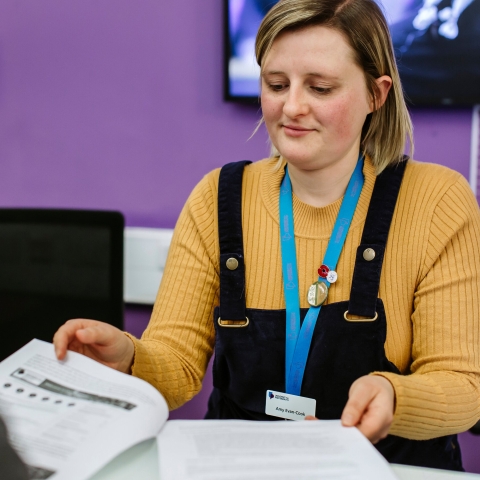
Portfolio guide
Our advice on creating a strong portfolio that will help you stand out from the crowd.

Career guides
Explore more than 40 industry guides and learn about the knowledge and experience you need to find a job in your dream sector.

